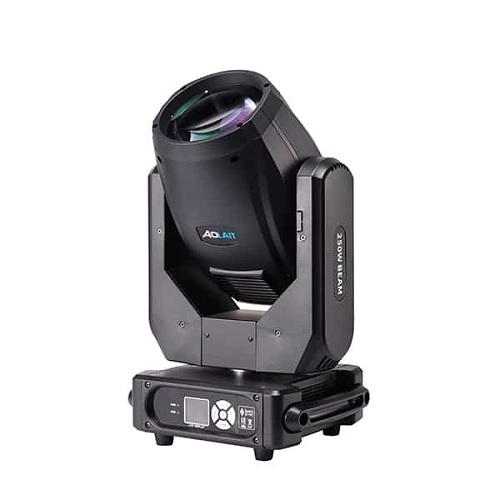Moving head beams have revolutionized the world of stage lighting, creating stunning visual displays that captivate audiences and enhance performances. These high-tech devices offer a range of lighting effects that can be programmed to change in sync with music or other performance cues, making them an essential tool for any modern stage production.
What are Moving Head Beams?
Moving head beam is compact, versatile lighting fixtures that can be remotely controlled to move and change color. They consist of a light source, a motorized head that can be rotated in any direction, and a lens that can be adjusted to control the beam's size and shape.
Most moving head beams are equipped with LED light sources that are capable of producing a wide range of colors, from cool blues to warm yellows and fiery reds. They can also be programmed to change color rapidly, creating dynamic visual effects that enhance the performance.
How Do Moving Head Beams Work?
Moving head beams are controlled by DMX (Digital Multiplex) technology, which enables the user to program the light fixtures to move and change color in time with the music or other performance cues. The DMX signal is sent from a lighting console to the moving head beams, which interpret the signal and move accordingly.
The moving head beams can be programmed to move in a variety of ways, including pan (left and right movement) and tilt (up and down movement), as well as rotation around their own axis. They can also be programmed to change color rapidly, strobe, or pulse, creating dynamic visual effects that enhance the performance.
What are the Benefits of Moving Head Beams?
Moving head beams offer a range of benefits over traditional stage lighting fixtures. They are highly versatile and can be used to create a variety of visual effects, from subtle color changes to bold strobing and pulsing effects.
They are also highly efficient, using LED light sources that consume less power than traditional lighting fixtures. This makes them more environmentally friendly and cost-effective in the long run.
Another benefit of moving head beams is their compact size. They take up less space on stage than traditional lighting fixtures, making them ideal for smaller venues and stages.
Finally, moving head beams offer a high degree of precision and control, enabling lighting designers to create complex lighting effects that are synchronized with the performance.
Conclusion
Moving head beams have revolutionized the world of stage lighting, offering a range of benefits over traditional lighting fixtures. They are highly versatile, efficient, and compact, and offer a high degree of precision and control. Whether you are a lighting designer or a performer, incorporating moving head beams into your production can help you create stunning visual displays that will captivate your audience and enhance your performance.
